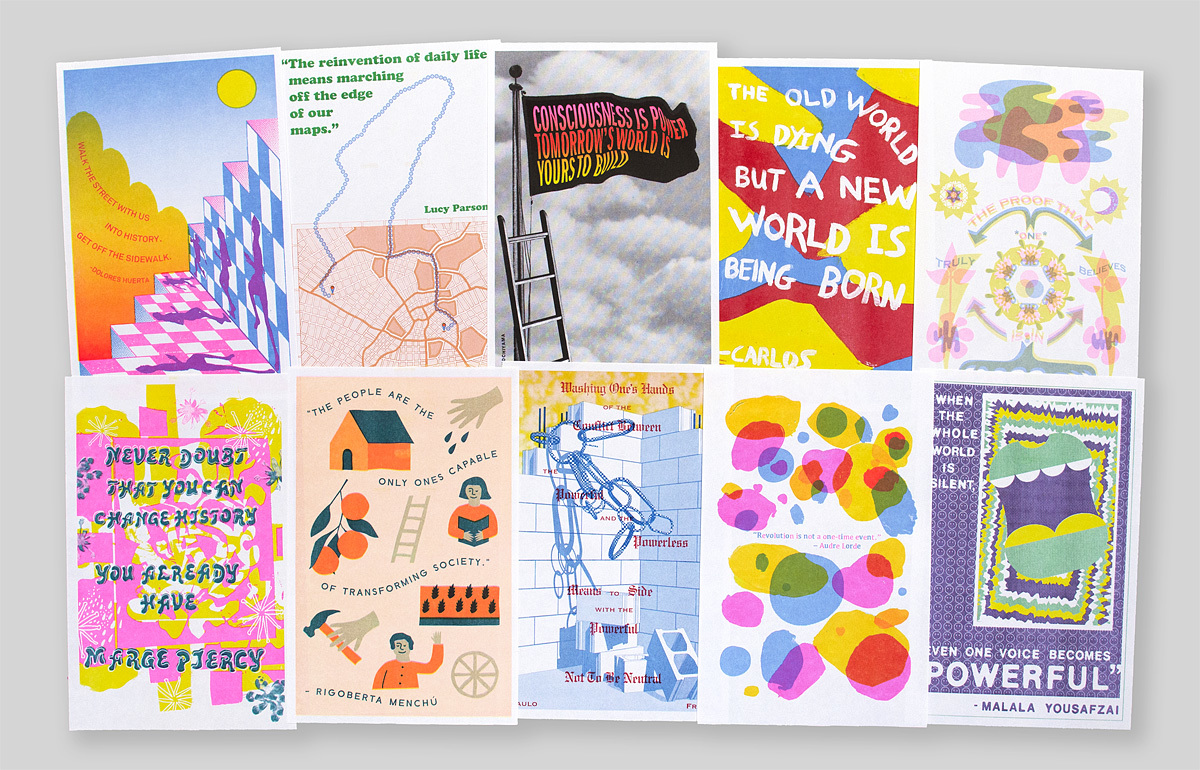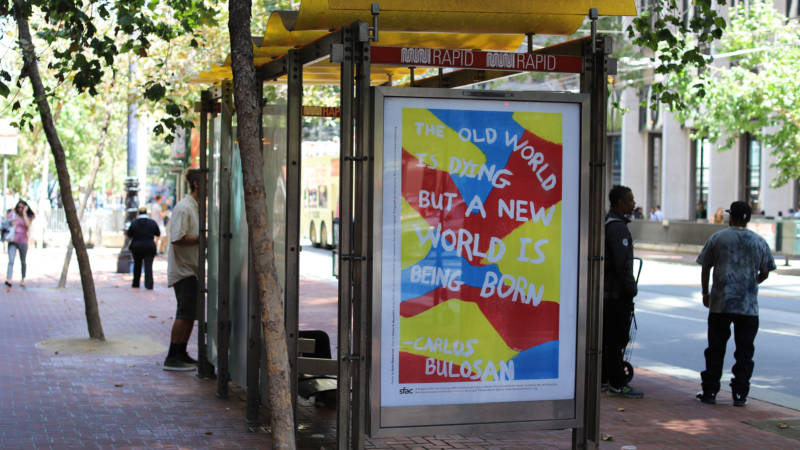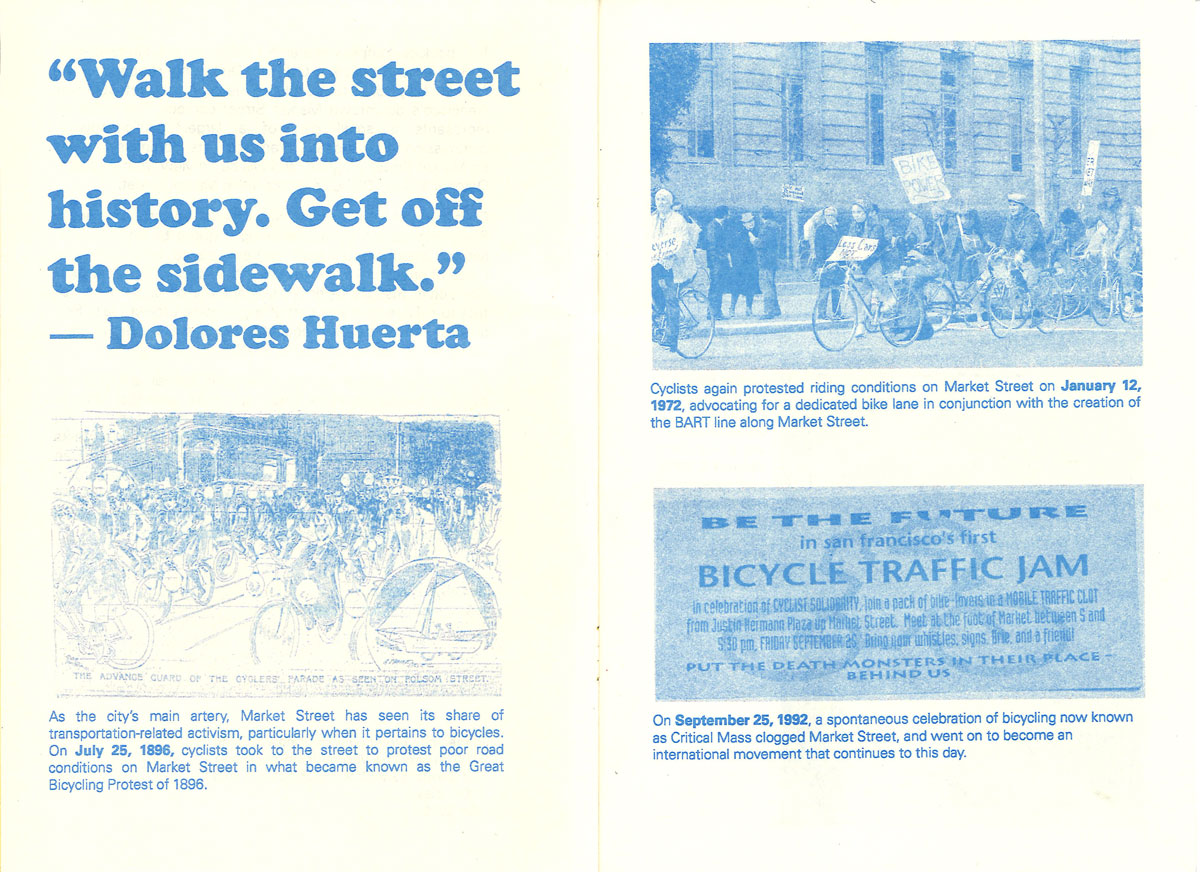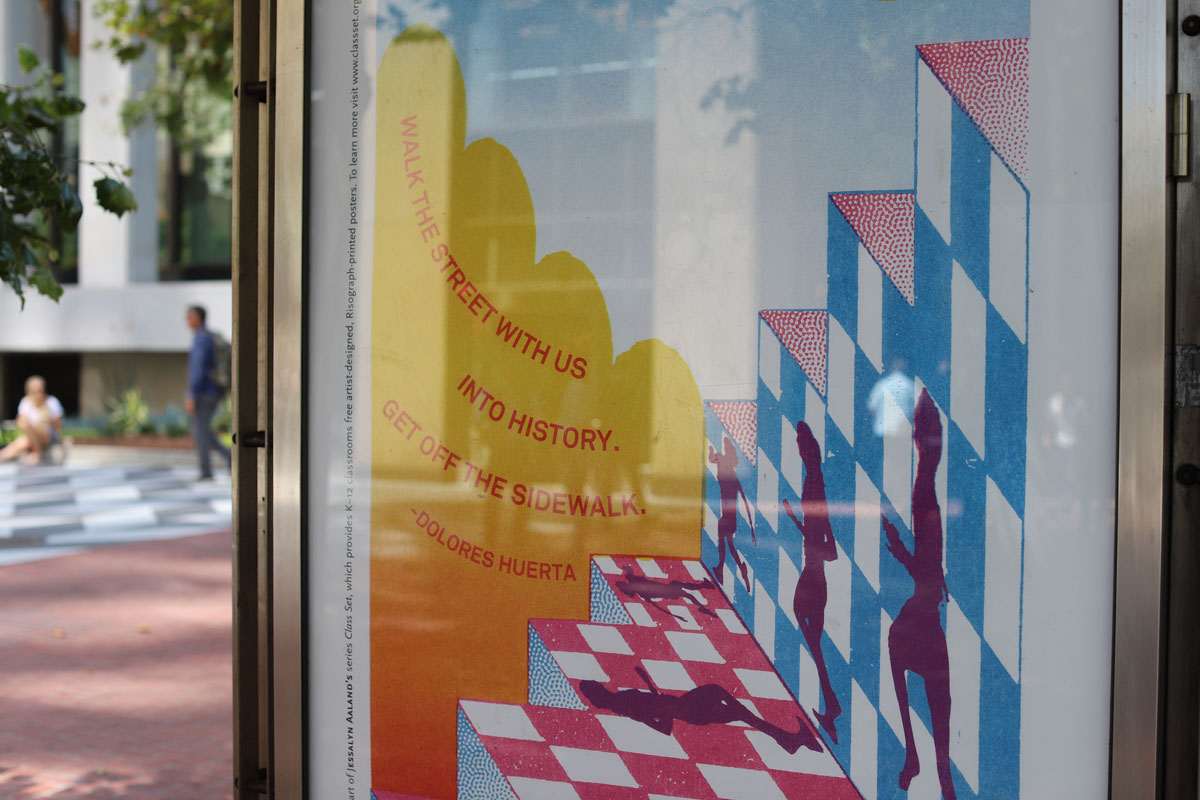The latest crop of San Francisco Arts Commission Art on Market Street posters may at first glance look like a series of inspirational quotes. “Consciousness is power,” reads one bus stop kiosk. “Tomorrow’s world is yours to build.”
But there’s more to those messages than a dose of optimism: Each quote from a prominent author or activist, selected by artist Jessalyn Aaland, opens the door to a deeper understanding of Market Street as a site of history-making marches and demonstrations. Informing the candy-colored posters is research on nearly 125 years of localized dissent, all part of a larger undertaking meant to provide future generations with the tools to make their voices heard.
The nine bus stop designs, which will remain on view through October, are enlarged versions of Risograph prints Aaland produced as part of Class Set, an ongoing project that distributes free artist-designed posters to K–12 classrooms. (Full disclosure: this writer contributed a design for Class Set Volume 1 in 2016).

So far, Aaland has distributed over 10,890 posters to classrooms across the United States; each volume is also available for sale to non-teachers, and proceeds from those sales help fund the next round of posters. The project is inspired by Aaland’s past experience as a teacher at San Francisco’s Balboa High School, where she inherited a classroom of peeling paint, broken lights, water-stained ceiling tiles and (fittingly) a clock frozen in time.
While Aaland livened up the space with her own art, student work and contributions from artist friends, she knew other teachers relied on a hodgepodge of free posters to decorate their walls. Class Set combines positive, progressive messages with contemporary art aesthetics. Aaland sees her role as that of the commissioning body; she picks the quotes, solicits the artwork and prints the posters with her partner, Paul Morgan.




